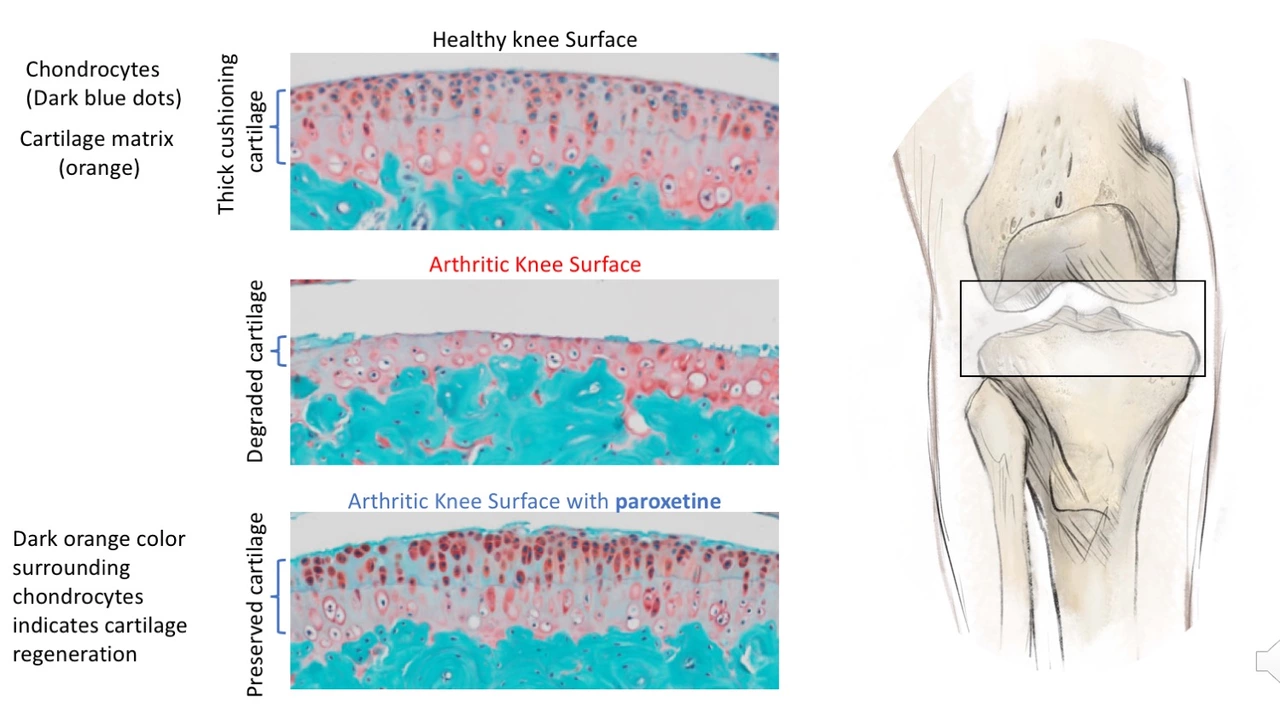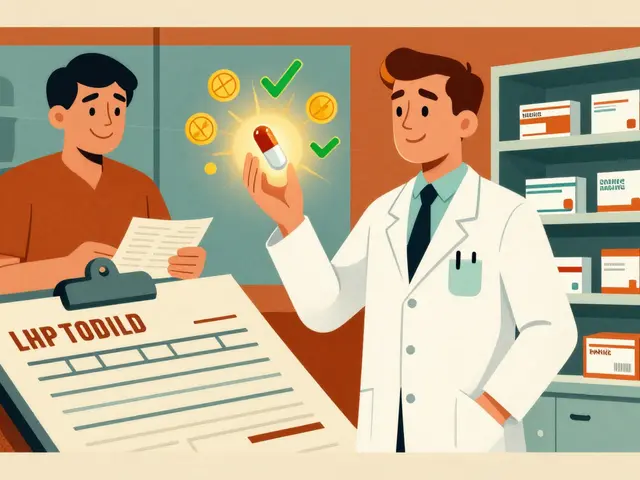Introduction: My Journey with Paroxetine and Depression
Depression is a battle I have fought for many years. I've tried different medications and therapies, but it wasn't until I found Paroxetine that I finally found relief. In this article, I want to share my personal experience with Paroxetine and how it has helped me manage my depression. I will also provide information on how Paroxetine works, its side effects, and other important aspects to consider when using this medication.
Understanding Depression: The Silent Enemy
Depression is a mental health disorder that affects millions of people worldwide. It is characterized by persistent feelings of sadness, hopelessness, and a lack of interest or pleasure in activities. Depression can also cause physical symptoms such as fatigue, sleep disturbances, and changes in appetite. The severity of depression can vary greatly from person to person, making it a complex and often misunderstood condition. It's important to remember that depression is not just "feeling sad" – it is a serious illness that requires professional help and treatment.
Paroxetine: The Antidepressant That Changed My Life
Paroxetine is a selective serotonin reuptake inhibitor (SSRI) that is commonly prescribed to treat depression, as well as other mental health disorders such as anxiety and obsessive-compulsive disorder. It works by increasing the levels of serotonin in the brain, a neurotransmitter that plays a crucial role in regulating mood. I began taking Paroxetine after trying several other medications that either didn't work or caused intolerable side effects. Within a few weeks of starting Paroxetine, I noticed a significant improvement in my mood and overall well-being.
The Science Behind Paroxetine and Serotonin
As I mentioned earlier, Paroxetine works by increasing the levels of serotonin in the brain. Serotonin is a neurotransmitter that helps regulate mood, sleep, appetite, and other important functions. In people with depression, it is believed that there is an imbalance in the levels of serotonin, which contributes to the symptoms of the disorder. Paroxetine helps to correct this imbalance by inhibiting the reuptake of serotonin, allowing it to remain in the brain for a longer period of time. This increased availability of serotonin can help improve mood and alleviate depressive symptoms.
Managing Side Effects: What to Expect When Starting Paroxetine
Like all medications, Paroxetine can cause side effects. Some common side effects include drowsiness, dizziness, dry mouth, sweating, and nausea. Most of these side effects are mild and tend to improve over time as your body adjusts to the medication. However, if you experience any severe or persistent side effects, it is important to consult your doctor for guidance. In my experience, the side effects I initially encountered were manageable and eventually diminished as I continued taking Paroxetine.
Combining Paroxetine with Therapy for Maximum Benefit
While Paroxetine has been instrumental in helping me manage my depression, I have also found that combining it with therapy has been the most effective approach. Participating in therapy allows me to address the underlying issues that contribute to my depression, while Paroxetine helps to improve my mood and overall functioning. I strongly believe that this combination of medication and therapy is the key to successfully managing depression for many people.
Paroxetine and Pregnancy: Important Considerations
If you are pregnant or planning to become pregnant, it is important to discuss your medications with your doctor. Some studies have suggested that taking Paroxetine during pregnancy may increase the risk of certain birth defects. However, every situation is unique, and your doctor will help you weigh the risks and benefits of continuing Paroxetine during pregnancy. In my case, I worked closely with my doctor to ensure that my treatment plan was safe and appropriate for both me and my baby.
Monitoring Progress: The Importance of Regular Check-Ins
When taking Paroxetine or any other medication for depression, it is essential to have regular check-ins with your healthcare provider. These appointments allow your doctor to monitor your progress, adjust your dosage if needed, and address any concerns or side effects you may be experiencing. In my experience, these regular check-ins have been crucial in ensuring that Paroxetine continues to be an effective treatment for my depression.
Alternatives to Paroxetine: Finding the Right Treatment for You
Not everyone will respond to Paroxetine in the same way, and it may not be the right medication for everyone. If you have tried Paroxetine and found that it is not effective for you, there are many other treatment options available. Other types of antidepressants, such as selective serotonin-norepinephrine reuptake inhibitors (SNRIs) or tricyclic antidepressants (TCAs), may be more suitable for your individual needs. It's important to work closely with your healthcare provider to find the right treatment plan for you.
Conclusion: A Winning Combination for Managing Depression
In conclusion, Paroxetine has been a game-changer in my battle against depression. By combining this medication with therapy, I have been able to manage my symptoms and live a more fulfilling life. While Paroxetine may not be the right choice for everyone, it is essential to explore all available treatment options and work closely with your healthcare provider to find the best approach for your unique needs. Remember that you are not alone in your fight against depression, and there is hope for a brighter future.







Cameron Perry
May 1, 2023 AT 02:45I've been on paroxetine for 3 years now and it's honestly been a lifesaver. Not perfect, but way better than the darkness I was in before. The first few weeks were rough, but my brain finally caught up. Now I can actually enjoy coffee in the morning without crying.
JOANNA WHITE
May 3, 2023 AT 01:29Same here 😊 I started at 20mg and slowly worked up. Side effects were wild at first-sweating like I was in a sauna and nausea like I'd eaten bad sushi. But after 6 weeks? I could sleep. I could laugh. I could go outside without feeling like the world was judging me. SSRIs aren't magic, but they're a damn good tool.
Alyssa Hammond
May 3, 2023 AT 19:56Let me just say this: if you think a pill fixes depression, you're delusional. Paroxetine doesn't fix anything-it just mutes the screaming long enough for you to forget you're drowning. Therapy? Sure, great. But if you're relying on a chemical to fix your life choices, your trauma, your toxic relationships, your job that drains your soul... you're just medicating the symptom, not the cause. And when you stop? The silence is louder than before.
Lisa Uhlyarik
May 3, 2023 AT 20:36I hate how everyone acts like SSRIs are the answer like its some miracle drug. My cousin took paroxetine for 8 years and ended up with sexual dysfunction so bad she couldn't even kiss her husband. And now she's off it and her brain feels like mush. You think you're fixed until you try to live without it and realize you're just a zombie on autopilot
Jill Amanno
May 4, 2023 AT 23:38You're all missing the point. Depression isn't a chemical imbalance-it's a spiritual wound. Paroxetine doesn't heal you, it just gives you a temporary veil so you can pretend you're okay. The real work is staring into the void and choosing to stay anyway. The pill just makes the void less loud. But you still have to face it. And most people? They don't want to. They just want to numb it. And that's why we're all still broken.
Tammy Cooper
May 5, 2023 AT 14:03OMG I CRIED READING THIS. I was on paroxetine for 2 years and I swear I felt like a human again. Not perfect. Not happy all the time. But I could cook. I could text my mom. I could watch a rom-com without feeling like I was being punished for existing. And when I tapered off? I didn't crash. I just... stayed. That's the win. Not magic. Just medicine. And that's enough.
Peggy Cai
May 7, 2023 AT 01:54People act like paroxetine is the answer but no one talks about how it makes you emotionally numb. You stop feeling sad but you also stop feeling joy. You stop crying at movies but you also stop laughing with your friends. Is that really living? Or are you just existing in a fog with a prescription bottle?
Phillip Lee
May 7, 2023 AT 20:01The science is clear. SSRIs increase serotonin availability. That's it. No mystical healing. No soul repair. Just pharmacology. If you think this is about 'finding yourself' you're confusing chemistry with philosophy. Paroxetine doesn't give you meaning. It just gives you the energy to find it yourself.
Priyamvada Toshniwal
May 8, 2023 AT 23:50I'm from India and I've seen so many people here scared of antidepressants. My aunt took paroxetine for 5 years and now she runs a small bakery and teaches yoga to kids. It didn't fix her past, but it gave her the strength to build something new. Sometimes medicine isn't about erasing pain-it's about giving you enough calm to start again.
Shivani Tipnis
May 10, 2023 AT 04:49If you're still on paroxetine after 6 months and nothing changed you're doing it wrong. This isn't a magic potion. You gotta move. You gotta eat. You gotta talk to someone. The pill is the starter motor-not the engine. Stop waiting for a pill to fix your life. Go outside. Walk. Breathe. Then take the pill. Not the other way around.
Kate Calara
May 11, 2023 AT 05:24I've been following this thread and I'm just shocked how many people are drinking the Kool-Aid. Paroxetine is literally one of the most overprescribed drugs in America. Big Pharma doesn't care if you're healed. They care if you're dependent. And guess what? The side effects? They're not 'mild.' They're terrifying. Weight gain. Emotional blunting. Suicidal ideation in young adults. And no one talks about the withdrawal hell. You think you're stable until you try to quit and your brain feels like it's being ripped apart with tweezers. This isn't a success story. It's a cautionary tale wrapped in a testimonial.
Cindy Fitrasari S.
May 12, 2023 AT 07:17I get why people are scared. I was too. But I also know that if I hadn't tried it, I wouldn't be here. I wouldn't have held my niece for the first time without wanting to disappear. I wouldn't have gone to my sister's wedding. I wouldn't have written that poem I'm proud of. Paroxetine didn't make me happy. But it gave me the space to become someone who could be. And that's worth something.
Chris Jagusch
May 13, 2023 AT 03:02You all talk like this is some western miracle. In Nigeria we don't have access to this stuff. People die from depression because they can't afford a pill. You think your struggle is unique? You're lucky you even have a doctor who will listen. Stop acting like paroxetine is the answer for everyone. For most of the world, it's a fantasy.
Kelley Akers
May 14, 2023 AT 20:25I'm not saying it doesn't work. But if your entire identity is tied to being the person who 'took paroxetine and got better'... you're not healing. You're just replacing one narrative with another. The real victory isn't the pill. It's when you stop needing to define yourself by it.
Nancy N.
May 15, 2023 AT 20:13i took it for 4 months and i just felt... empty. like my emotions were on mute. i stopped because i was scared i'd forget how to feel. maybe i was wrong. but i don't want to be a zombie even if i'm a happy zombie
Taylor Smith
May 16, 2023 AT 20:04I'm the author. Thank you all for sharing. I didn't expect this many responses. I just wanted to say-my story isn't universal. But it's mine. And if even one person reads this and feels less alone, then it was worth writing. I'm not healed. I'm not fixed. I'm just managing. And that's okay.